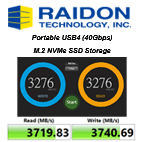Financial Institutions Rising Interest in Solving New Cyber Threats, Data Center Space Constraints, and Cloud Paradox
By Tony DeLisio, VP, financial accounts at Infinidat
This is a Press Release edited by StorageNewsletter.com on November 5, 2024 at 2:01 pm This article, published on October 10, 2024, was written by Tony DeLisio, VP, financial accounts, Infinidat Ltd.
This article, published on October 10, 2024, was written by Tony DeLisio, VP, financial accounts, Infinidat Ltd.
Financial institutions face significant infrastructure challenges. The threat of cyberattacks vs. enterprise data infrastructure continues to escalate, and financial institutions need to build more cyber-resilience into their infrastructure to minimize the impact of attacks by cyber criminals.
On the other hand, their data centers are running out of space, but they don’t really want to build new data centers. They go to the public cloud, but they then find out it’s more expensive than anticipated, and there are trade-offs that create risk.
These challenges call for a combination of new strategies, deep insights, and advanced technological solutions suited for financial institutions, including banks, brokerages, asset management companies, credit card companies, and financial service providers, among others.
Ransomware Attacks Vs. Financial Institutions Are on Rise
Cyber resilience is critical for a financial institution’s storage infrastructure, both to protect and defend its data vs. cyberattacks, but also to recover its data in the event of a ransomware attack.
According to Statista, from 2021 to 2024, the share of financial institutions WW experiencing ransomware attacks has increased. In 2024, roughly 65% of financial organizations WW reported experiencing a ransomware attack, compared to 64% in 2023 and 34% in 2021.
To ensure the integrity of the data they collect and process – including bank account information, credit card information, client data and personal consumer information – banking and finance leaders must navigate a challenging security landscape.
The key to fighting off a cyberattack is having a known clean copy of data that can be recovered before the cyberattack has any significant impact. This is supported by cyber-detection, automated cyber-protection, encryption, access management controls, capacity consumption thresholds, guaranteed RTO and data testing. At the same time, the strategy must satisfy financial regulatory requirements.
At Infinidat, we have gained this insight from our hands-on experience with financial institutions that have the most stringent requirements. The company provides compliance-optimized, cyber-resilient and cyber-recovery storage solutions suited for banks and other large financial institutions.
Already used by many large banks in multi-tiered strategies for further protecting their most critical assets, firm’s InfiniSafe solution for cyber-resilience in primary storage includes a variety of vital elements:
- Immutable snapshots: Whether automated, scheduled or manually created, its immutable snapshots are secure and unchangeable, point-in-time copies.
- Logical remote air-gapping: It provides a simple way to logically separate immutable data copies from network access, either locally, remotely, or both.
- Fenced forensic environment: It enables you to create a completely private network that is isolated for data validation, testing, and recovery.
- Cyber detection: InfiniSafe Cyber Detection validates the integrity of your immutable snapshots using powerful, AI-based scanning engines.
- Automated cyber protection: InfiniSafe Automated Cyber Protection reduces the threat window for cyberattacks, enabling integration into your SOC, SIEM, or SOAR applications.
- Near-instantaneous cyber recovery: Get all of your known good and validated data back and available for restore in minutes, regardless of the data set size, supported by guaranteed recovery SLAs.
These elements all come together to build and enhance the cyber resilience of a financial institution’s data infrastructure. By being one of the few enterprise storage solution providers with such a broad set of cyber capabilities specifically for primary storage as well as secondary storage, the vendor has vastly improved the way financial institutions combat ransomware and malware.
Data Center Constraints vs. The Public Cloud Paradox
Financial institutions are understandably reluctant to build new data centers due to high costs and technological shifts. They want to get the most out of the space of their existing data centers. Simultaneously, they want to leverage the public cloud, but they have to maintain a certain level of control of data.
What we have learned is that providing large storage capacity in a fraction of the size of traditional storage arrays is greatly helping a variety of financial institutions, including large banks, make more efficient use of space.
Furthermore, they can also have a cloud experience in a private data center, making the private cloud and public cloud appear as in an end-to-end hybrid multi-cloud experience.
The company enables customers to have an end-to-end experience that makes their business infrastructures consistent and easy to manage as well as providing them with storage management standardization from on-premises to the cloud.
InfuzeOS Cloud Edition is powered by the same enterprise InfuzeOS that powers our InfiniBox G4, InfiniBox SSA G4, and InfiniGuard platforms, reducing the OPEX costs to manage the storage estate. InfuzeOS Cloud Edition is available for Microsoft Azure and AWS environments.















 Subscribe to our free daily newsletter
Subscribe to our free daily newsletter

